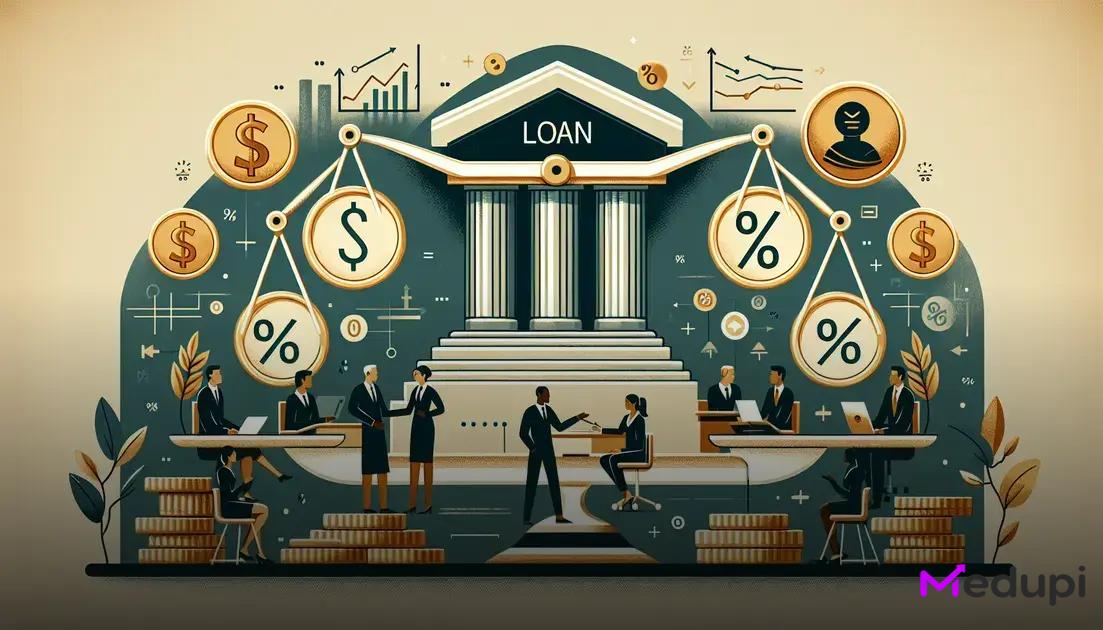ADVERTISEMENT
Loan interest rates are a crucial factor in your financial decisions. Understanding them can help you save money and manage your debts more effectively. Whether you’re taking out a mortgage, a personal loan, or a car loan, knowing the ins and outs of loan interest rates is essential.
Understanding different types of loan interest rates
Fixed Interest Rates: Fixed interest rates remain the same for the life of the loan. This means your monthly payments will be consistent, making budgeting easier. They are particularly beneficial during times of low-interest rates, as you can lock in a low rate for the entire term of your loan.
ADVERTISEMENT
Variable Interest Rates: Variable interest rates, on the other hand, fluctuate based on market conditions. This means your payments can change over time. While they often start lower than fixed rates, they can increase significantly, depending on economic factors. Variable rates are typically attractive when interest rates are expected to drop or remain stable for a period.
Prime Interest Rates: Prime interest rates are typically used as a base rate by banks and are influenced by the central bank’s policy rates. Loans based on prime rates can either be fixed or variable. These loans often cater to individuals with strong credit profiles, offering competitive rates.
ADVERTISEMENT
Discounted Interest Rates: Some loans offer discounted interest rates for an introductory period. After this period, the rates may revert to a higher standard rate. This type of loan can be appealing as a short-term solution for reducing initial costs, but it is crucial to understand the long-term implications.
Compound Interest Rates: With compound interest, the interest on a loan is calculated on both the initial principal and the accumulated interest from previous periods. This can lead to paying more over time. Understanding the frequency of compounding (daily, monthly, or yearly) is essential as it directly affects the total cost of the loan.
Factors that influence loan interest rates

Several elements come into play when determining loan interest rates. One key factor is your credit score. Lenders consider individuals with higher scores less risky, often granting them lower rates. Conversely, a lower score can result in higher rates due to the perceived risk.
Another influential aspect is the type of loan you’re seeking. Secured loans, such as mortgages or auto loans, generally feature lower interest rates than unsecured loans like personal loans or credit cards. This is because secured loans are backed by collateral, reducing the risk for the lender.
Economic conditions also play a crucial role. In times of economic growth, interest rates tend to be higher due to increased demand for borrowing. Conversely, during economic downturns, rates are likely to drop as central banks adjust monetary policies to stimulate spending.
Loan term length is another consideration. Shorter-term loans typically have lower rates compared to longer-term loans. While longer terms spread out repayment and may offer smaller monthly payments, the accumulated interest over time can be significant.
Additionally, your debt-to-income ratio (DTI) informs lenders about your ability to manage monthly payments. A lower DTI suggests a better capacity to handle debt, potentially leading to more favourable interest rates.
The lender’s own policies and competition can also impact interest rates. Different institutions have varying criteria and strategic approaches. Shopping around and comparing offers can therefore be beneficial.
Tips for getting the best loan interest rates
To secure the best loan interest rates, it’s crucial to maintain a good credit score. Pay your bills on time, reduce outstanding debts, and avoid opening numerous new credit lines in a short period. Lenders often grant favourable interest rates to clients with reliable credit histories as it indicates a lower risk.
Shopping around and comparing offers from different lenders is another effective strategy. Online comparison tools can assist by providing a side-by-side view of potential rates. Look for special promotions or discounts that might be available to new customers.
Another key tip is to consider the loan term. Typically, shorter loan terms have lower interest rates but higher monthly repayments. Evaluate your financial situation to decide what term works best. You might save more money with a slightly higher rate but a shorter repayment period.
Additionally, negotiate with lenders. Many people don’t realise they can negotiate loan terms. If you have a good credit score or banking history, use it to your advantage to ask for better rates. Inform lenders if you’ve received lower offers elsewhere.
A larger down payment can also lower your loan interest rate. Lenders see a larger down payment as a sign of commitment and reduced risk, often resulting in more favourable rates.
Finally, consider the type of interest rate that’s being offered. Fixed rates remain constant throughout the loan term, providing predictability. Variable rates, however, may start lower but can increase over time. Choose according to your financial stability and willingness to take on potential future changes in repayment amounts.
How to compare loan interest rates effectively

When it comes to comparing loan interest rates, having a detailed strategy is vital. First, gather quotes from multiple lenders. Each lender has their own criteria for determining rates, and comparing these can help you pinpoint the best deal. Second, look beyond the annual percentage rate (APR). While APR provides a comprehensive view of the loan cost, you should also check for hidden fees and charges. Be wary of introductory rates that might look tempting but could increase dramatically after a short period.
Another critical step is to use comparison tools and calculators. These online resources allow you to input loan amounts, terms, and interest rates to visualize your monthly payments and total costs. Additionally, pay attention to the loan terms. Shorter-term loans often come with higher monthly payments but lower total interest costs, while long-term loans might have smaller monthly payments but higher total interest.
Always read the small print and ask questions. Lenders might offer attractive rates but have terms and conditions attached that aren’t favourable. Understanding these nuances will enable you to make a well-informed decision. Moreover, consider consulting financial advisors who can provide professional insights and recommendations tailored to your specific financial situation.
In summary, diligent research, understanding different components of the loan, and utilizing available tools are keys to effectively comparing loan interest rates. Following these steps can save you significant money and lead to better financial decisions.
The future of loan interest rates: What to expect
When considering the future of loan interest rates, staying informed is key to making sound financial decisions. Several factors will influence the direction of these rates.
Economic growth is a major factor. As the economy strengthens, interest rates may rise to prevent inflation from spiraling. Conversely, in a sluggish economy, rates might be lowered to stimulate borrowing and investment.
Inflation trends also play a crucial role. Central banks often adjust interest rates to manage inflation. If inflation is high, expect an increase in loan rates to stabilize prices.
Market sentiments and global financial conditions are significant as well. A stable global financial climate can contribute to more predictable loan interest rates, while instability might lead to fluctuations.
Government policies and regulations are essential considerations too. New policies or changes in existing regulations related to lending can impact interest rate trends.
Finally, advancements in financial technology are shaping the future of loan interest rates. Increased transparency and greater borrower access through these technologies can lead to more competitive rates.





